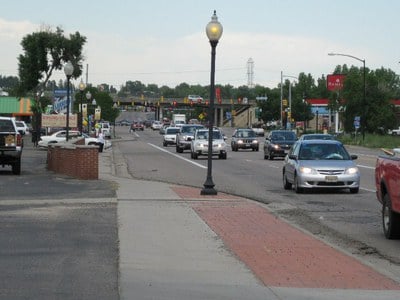Public Participation
 Understanding the ideas, perspectives, and needs of key stakeholders in the interchange area is critical to building broadly supported decisions and solutions. CDOT provided multiple opportunities for the local jurisdictions, regional partners, and general public to engage and inform the study. The outreach includedthe following:
Understanding the ideas, perspectives, and needs of key stakeholders in the interchange area is critical to building broadly supported decisions and solutions. CDOT provided multiple opportunities for the local jurisdictions, regional partners, and general public to engage and inform the study. The outreach includedthe following:
Broad Public Outreach: The general public was actively engaged, ensuring meaningful input was provided on the goals and objectives, alternative, and priorities for the phasing of recommended improvements. Two interactive public meetings were held:
- Public Meeting #1 was held on April 25, 2012 to educate the public on the PEL process, present the existing conditions of the interchange, and to collect input on interchange issues and problem areas. For a summary of comments received at this meeting, click here.
- Public Meeting #2 was held on Dec. 4, 2012 for the public to provide input on the alternatives recommended to move forward following Level 2 screening. For a summary of comments received at this meeting, click here
A final project update postcard was distributed to the project mailing list in early August 2014. View postcard.
Technical Team: The Technical Team (TT) met frequently with CDOT to provide technical input as the PEL study progresses. The TT included staff from the local communities, state and federal agencies, and other regional partners. The members of the TT kept their respective elected officials updated and served as the primary connection with their communities or organizations.
- Visioning Workshop: At the start of the project, an interactive Visioning Workshop was held with the TT members to shape the goals and desired outcomes of the I-70/Kipling interchange projects, which helped to inform the development and screening of alternatives.
Focused Community Groups: During the alternatives development and evaluation process, the project team met with focused community groups representing stakeholders directly affected by the interchange existing conditions and potential improvement alternatives. These groups helped the project team identify potential impacts and discuss possible resolution techniques.
- The first round of Community Focus Groups were held in early August 2012, and consisted of meetings with a Residential group, a Business group and a Multimodal Travel group. Focus group members reviewed proposed improvement alternatives and discussed likely impacts of improvements.
- The second round of Community Focus Group meetings were held in mid November 2012 and consisted of meetings with a Residential group, a Business group and a Multimodal Travel group. In addition, two meetings were held with area emergency service providers. Meeting attendees provided feedback regarding the alternatives recommended to move forward following Level 2 screening.
